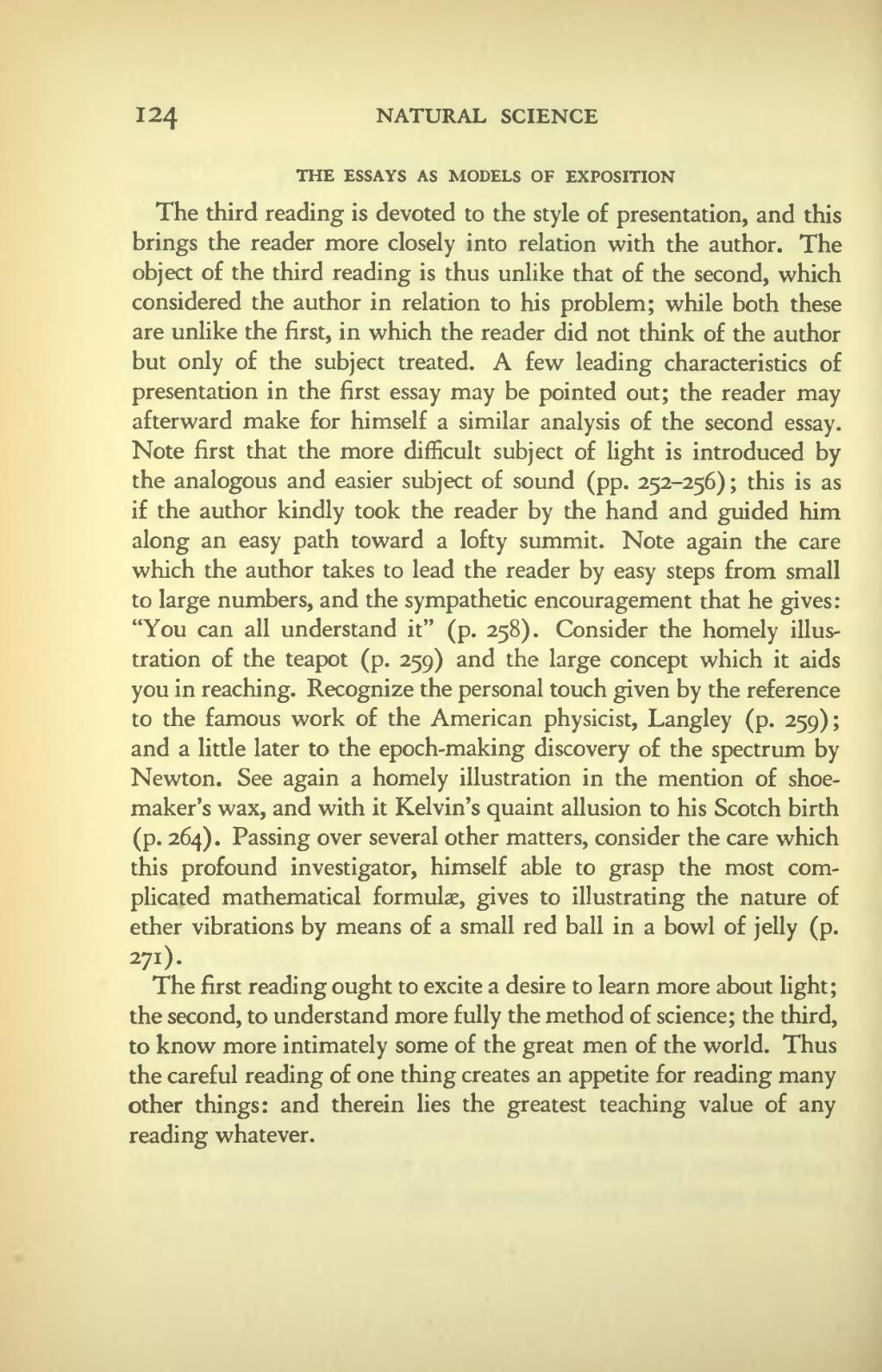THE ESSAYS AS MODELS OF EXPOSITION
The third reading is devoted to the style of presentation, and this brings the reader more closely into relation with the author. The object of the third reading is thus unlike that of the second, which considered the author in relation to his problem; while both these are unlike the first, in which the reader did not think of the author but only of the subject treated. A few leading characteristics of presentation in the first essay may be pointed out; the reader may afterward make for himself a similar analysis of the second essay. Note first that the more difficult subject of light is introduced by the analogous and easier subject of sound (pp. 252–256); this is as if the author kindly took the reader by the hand and guided him along an easy path toward a lofty summit. Note again the care which the author takes to lead the reader by easy steps from small to large numbers, and the sympathetic encouragement that he gives: "You can all understand it" (p. 258). Consider the homely illustration of the teapot (p. 259) and the large concept which it aids you in reaching. Recognize the personal touch given by the reference to the famous work of the American physicist, Langley (p. 259); and a little later to the epoch-making discovery of the spectrum by Newton. See again a homely illustration in the mention of shoemaker's wax, and with it Kelvin's quaint allusion to his Scotch birth (p. 264). Passing over several other matters, consider the care which this profound investigator, himself able to grasp the most complicated mathematical formulae, gives to illustrating the nature of ether vibrations by means of a small red ball in a bowl of jelly (p. 271).
The first reading ought to excite a desire to learn more about light; the second, to understand more fully the method of science; the third, to know more intimately some of the great men of the world. Thus the careful reading of one thing creates an appetite for reading many other things: and therein lies the greatest teaching value of any reading whatever.
